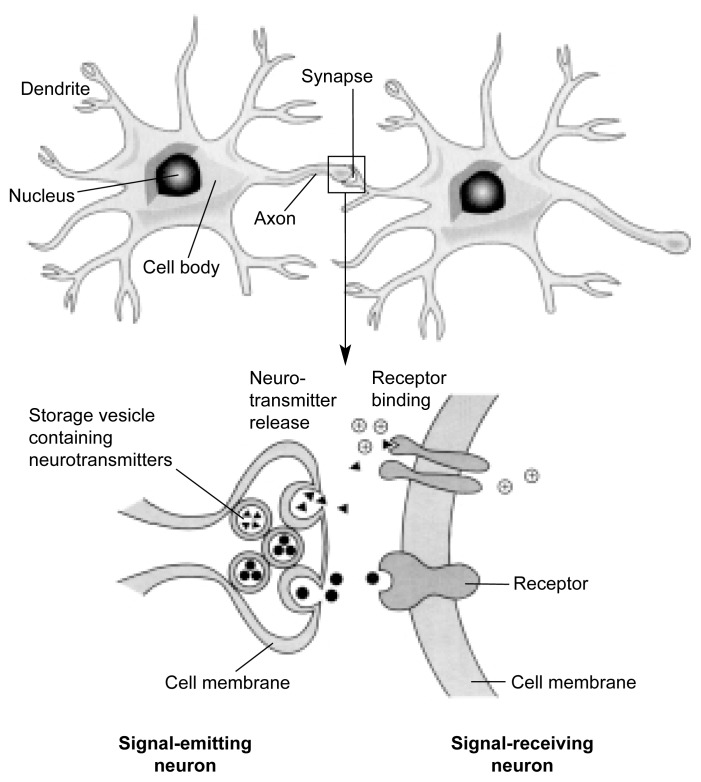Figure 2.
Structural features of a typical nerve cell (i.e., neuron) and synapse. This schematic drawing depicts the major components of a typical neuron, including the cell body with the nucleus; the dendrites that receive signals from other neurons; and the axon, which relays nerve signals to other neurons at a specialized structure called a synapse (see inset). When the nerve signal reaches the synapse, it causes the release of chemical messengers (i.e., neurotransmitters) from storage vesicles. The neurotransmitters travel across a minute gap between the cells and then interact with protein molecules (i.e., receptors) located in the membrane surrounding the signal-receiving neuron. This interaction causes biochemical reactions that result in the generation, or prevention, of a new nerve signal, depending on the type of neuron, neurotransmitter, and/or receptor involved.

